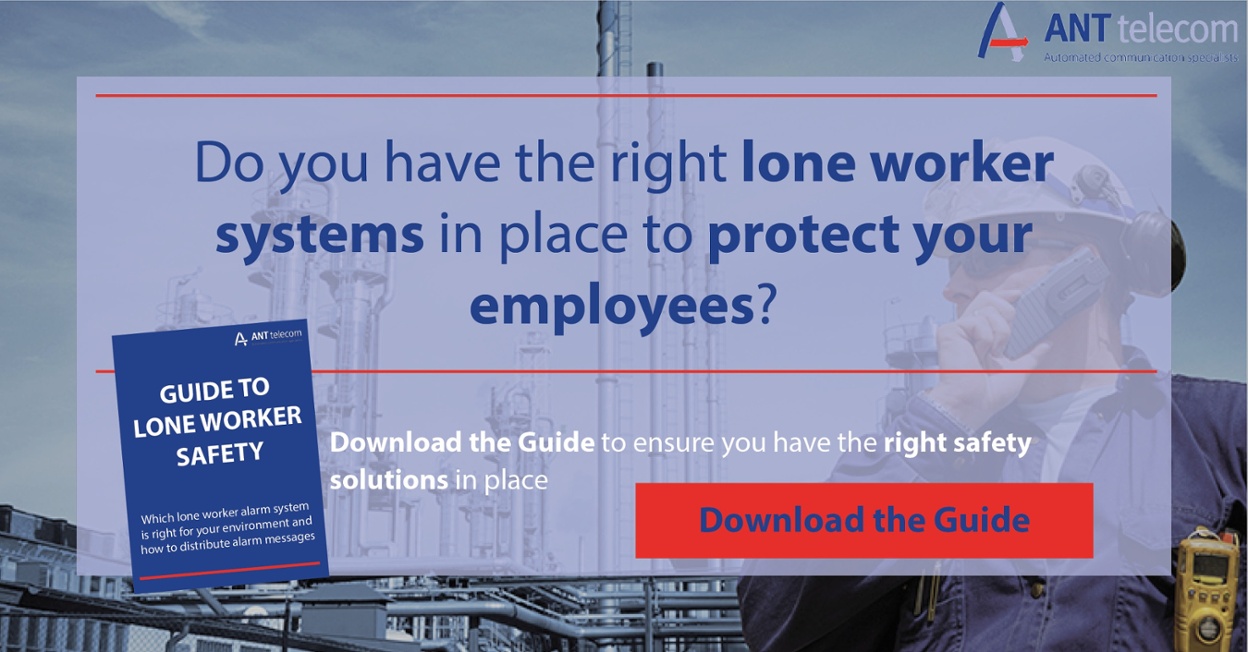 When managing a team of employees and calculating a safety plan to ensure each of them is protected from danger at work, having a quick response process is essential. With most workforces having lone workers in some form, it is important to thoroughly plan emergency response procedures that are tailored to this. Although some lone workers may be in contact with other individuals throughout their working day, making sure that they are protected and monitored when they are working alone is crucial. Any employee that is required to work alone (even for short periods of time) needs to be treated as a lone worker, with a procedure in place to ensure a quick response in case of emergency.
When managing a team of employees and calculating a safety plan to ensure each of them is protected from danger at work, having a quick response process is essential. With most workforces having lone workers in some form, it is important to thoroughly plan emergency response procedures that are tailored to this. Although some lone workers may be in contact with other individuals throughout their working day, making sure that they are protected and monitored when they are working alone is crucial. Any employee that is required to work alone (even for short periods of time) needs to be treated as a lone worker, with a procedure in place to ensure a quick response in case of emergency.
Why A Quick Response to a Lone Worker Emergency Is Essential
Lone worker emergencies can have more serious consequences than an emergency occurring in the workplace where others are present. For example, if a worker falls unconscious on a shift and is working alongside co-workers or in a customer facing environment, it is likely that someone will notice and emergency help will be called. However, if an individual is working alone, the only way others may know, is if the worker is able to communicate effectively that they are in danger. Having a procedure in place that allows workers to do this and receive the help they need as quickly as possible can reduce the chances of any serious consequences.
How to Improve Response Times to Emergencies in The Workplace
There are several ways that response times can be improved. Usually, the most important factor is to ensure that each employee is familiar with the response procedure and is up-to-date on any health and safety training that they require. Making sure that each employee knows their role in an emergency response process is the first step to a smooth and efficient response.
Identifying Lone Worker Hazards
It is not always possible to assess each work environment that a lone worker will be operating in. For example, if a worker is required to carry out tasks outside of their usual work environment (or travel to maintenance calls), then it can be difficult. However, for lone workers that are on-site in a warehouse, lab, plant, depot, or other environment, steps can be taken. On-site lone worker hazards may include: areas where there is a lack of communication infrastructure, areas that a worker may encounter falling objects or dangerous machinery, or small spaces that could cause a worker to become trapped and unable to call for help. Once lone worker hazards have been identified, planning around them is a lot simpler.
Trail Audits
Using trail audits to allow managers to monitor the response process can be beneficial when attempting to identify areas for improvement. This means looking at areas like alarm monitoring and ensuring that someone is responsible for monitoring alarms at all times. If there is nobody responsible for monitoring emergency alarms, then others will be unaware of the need to respond and perform their duties in the response procedure. To make sure each individual is aware of their duties and role in a response procedure, it is important to practice emergency drills regularly. This can help to improve the response time as a whole and allow managers to see areas that may be in need of improvement.
A Response timeline usually consists of: an alarm trigger, acceptance, notification, escalation, close down. As there are several steps to the process, there are likely areas that can be improved. Using audits can highlight these areas and allow managers to reassess the process and suggest improvements for both the team and any equipment that is used in the procedure.
Infrastructure and Devices
Infrastructure and the devices that are used in the process are a major part of whether or not an emergency response procedure goes to plan. Some alarm devices may need Wi-Fi, Radio or mobile signal to operate correctly. In addition to this, some systems will require batteries. Ensuring there is access to charging points/spare batteries is paramount. Mobile devices that allow workers to trigger an alarm may rely on mobile signal, in order for an alarm to be received and responded to by the person that is responsible for monitoring.
Using Automated Systems Can Also Improve Response Times
One factor that can slow an emergency response process down is a solution that relies on manual operation. If most of the stages in the response require several individuals to manually perform their part of the process, the overall response time can be slowed down significantly. This can be very dangerous in a life-threatening situation. In emergency situations, time is a huge factor in the outcome of the emergency. The time taken to respond can be the difference between life and death.
Using an automated system can help to speed up the time taken to respond to an emergency, which is beneficial to everybody involved. For example, some companies may rely on check calls to monitor the safety of their lone workers. Making calls periodically to lone workers is better than doing nothing, however, it is still an expensive and unreliable method of monitoring staff.. Check calls cost companies both time and money. If an employee has an accident and has to wait an hour before they receive a check-call, then their condition may worsen.
This is why we always recommend devices or handsets that allow staff to raise alarms, either by pressing a panic button or via a tilt sensor that detects when the device is in a horizontal position, which is also very useful in scenarios where an employee may be unconscious and unable to call for help. Devices combined with our Alarm Management System ensures that any alarm triggered is sent to a team of responders that can help the lone worker. Each alarm must be acknowledged and subsequently closed once the lone worker has been found and confirmed safe. Should the team fail to acknowledge an alarm within a specific timeframe, the alarm is escalated to an alternative group.





